Capacitors play a vital role in storing and releasing electrical energy in electronic components. Among the various types of capacitors available, Multilayer Ceramic Capacitors (MLCC) stands out as one of the most popular choices due to their versatility, compact size, and wide range of applications. In this article, we will delve into the definition, characteristics, classification, and basic principles, and provide a circuit diagram example of MLCC capacitors the advantages, function, internal structure, identification methods, ratings, and applications of MLCC capacitors and provide a circuit diagram example of MLCC capacitors.
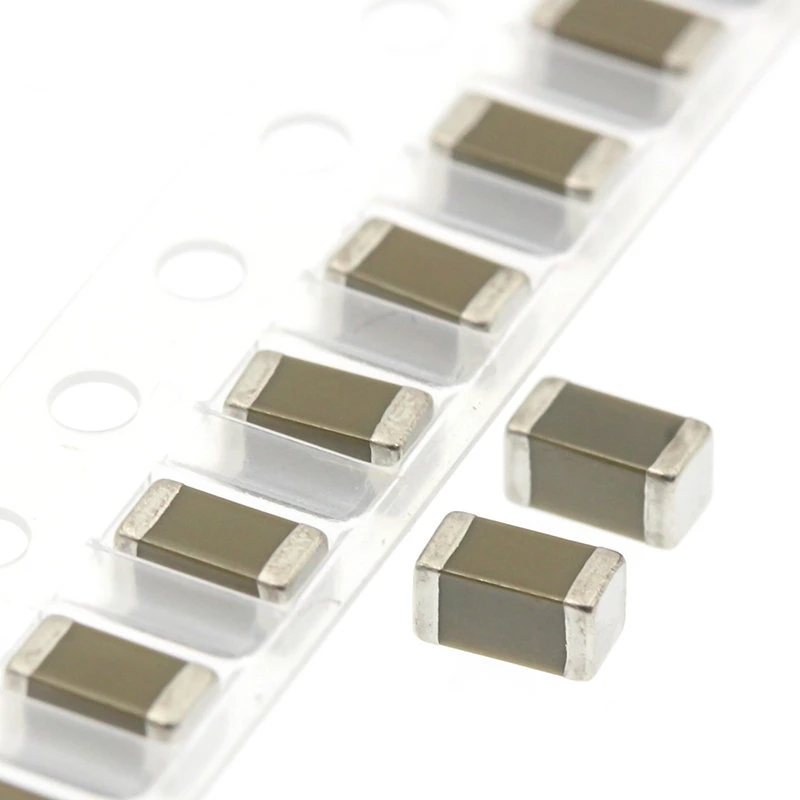
Definition of MLCC Capacitors:
A Multilayer Ceramic Capacitor, commonly known as an MLCC, is an electronic component used for energy storage and filtering in electronic circuits. It is constructed using multiple layers of ceramic material, each coated with a metal electrode on both sides. These layers are then stacked and interconnected, forming a compact and efficient capacitor.
Basic Principles:
An MLCC capacitor’s basic principle revolves around storing electrical energy between two conductive plates separated by an insulating dielectric material. In an MLCC capacitor, the multiple ceramic layers act as the dielectric, and the metal electrodes on each layer serve as the conductive plates. When a voltage is applied across the terminals of the capacitor, it stores energy in the form of an electric field between the layers. The amount of energy stored is proportional to the capacitance value of the capacitor.
Characteristics:
Small Size, High Capacitance: MLCC capacitors offer high capacitance values in a small physical size, making them ideal for miniaturized electronic devices.
Wide Range of Capacitance Values: MLCC capacitors are available in a wide range of capacitance values, from picofarads (pF) to microfarads (μF), allowing for flexibility in design.
Low ESR and ESL: MLCC capacitors exhibit low Equivalent Series Resistance (ESR) and Equivalent Series Inductance (ESL), which enhances their performance in high-frequency applications.
High Voltage Ratings: MLCC capacitors can handle various voltage levels, making them suitable for voltage-sensitive applications.
Fast Charging and Discharging: MLCC capacitors can charge and discharge rapidly due to their low internal resistance, making them useful in applications requiring quick energy transfer.
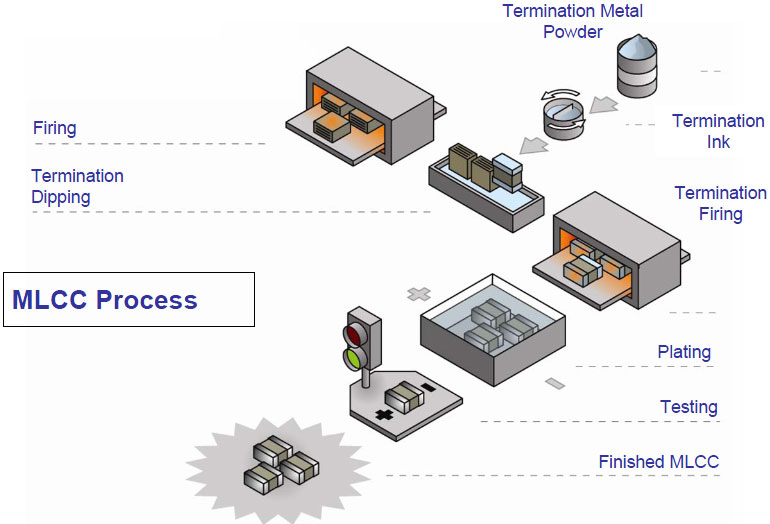
Classification of MLCC Capacitors:
MLCC capacitors can be classified based on several factors:
Dielectric Material: Different ceramic materials are used as dielectrics in MLCC capacitors, such as Class I (NPO, COG) for stable capacitance across temperatures and Class II (X7R, X5R, Y5V) for higher capacitance but with varying characteristics.
Temperature Coefficient: MLCC capacitors are categorized by their temperature coefficient, indicating how their capacitance changes with temperature. For example, X7R has a moderate coefficient, while COG has a near-zero coefficient.
Capacitance Value: MLCC capacitors are available in various capacitance values to accommodate different circuit requirements.
Circuit Diagram Example:
Consider a simple example of an MLCC capacitor used in a filtering circuit. In Figure 1, an MLCC capacitor is connected in parallel with a load resistor, creating a low-pass filter. This configuration allows AC signals to pass through while blocking DC signals. The MLCC capacitor smooths out the variations in the input signal, ensuring a cleaner output.
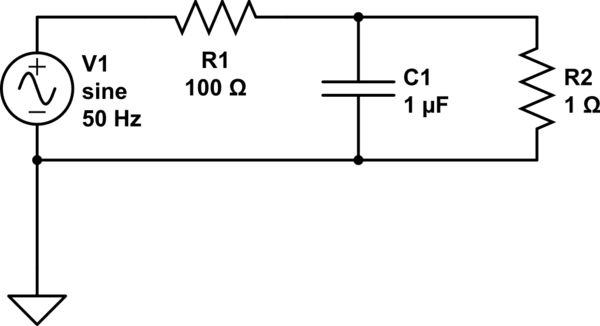
Advantages of MLCC Capacitors:
Compact Size: MLCC capacitors excel in miniaturization, allowing for dense packing of components on circuit boards.
High Capacitance Density: These capacitors offer a high capacitance value in a small package, making them perfect for limited-space applications.
Low ESR and ESL: MLCCs exhibit low Equivalent Series Resistance (ESR) and Equivalent Series Inductance (ESL), enhancing their performance in high-frequency applications.
Stability: Certain classes of MLCCs, like Class I (COG/NPO), maintain a stable capacitance over a wide temperature range.
Fast Response: The low internal resistance of MLCCs enables them to charge and discharge quickly, suitable for applications demanding rapid energy transfer.
The function of MLCC Capacitors:
At its core, an MLCC capacitor functions as a component for energy storage. When voltage is applied across its terminals, it accumulates electric charge as an electric field between its ceramic layers, thereby storing energy. This stored energy can be released when needed, making MLCCs invaluable for filtering noise, stabilizing power supplies, and coupling and decoupling signals.
Internal Structure:
MLCC capacitors consist of numerous ceramic layers, each coated with a conductive material on both sides. These layers are stacked and interleaved, with the conductive coatings forming alternating connections. The insulating ceramic layers act as the dielectric, while the conductive coatings serve as the capacitor plates.
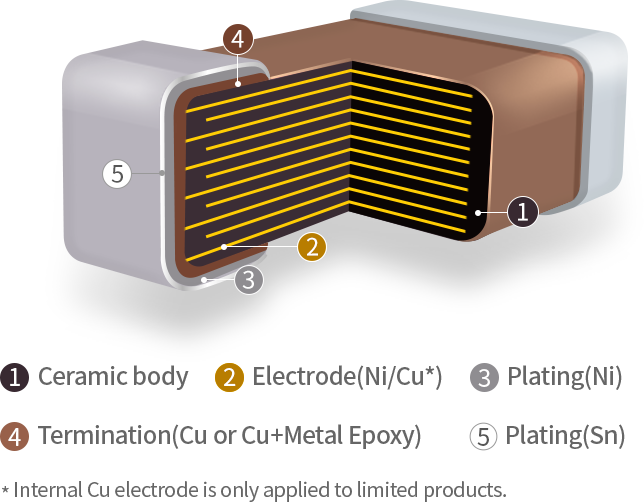
Identification Methods and Ratings:
MLCC capacitors are marked with alphanumeric codes denoting their characteristics. This includes the capacitance value, voltage rating, tolerance, and sometimes the temperature coefficient. For instance, in the code “104K,” “10” represents the first two digits of the capacitance in picofarads (pF), and “4” indicates the number of zeros to add (yielding 100,000 pF or 100 nF). The letter “K” indicates a tolerance of ±10%.
Applications and Products:
MLCC capacitors find their application in an array of devices and industries, including:
Consumer Electronics: Mobile phones, laptops, TVs, and audio devices use MLCCs for power filtering and noise suppression.
Automotive: In automotive electronics, MLCCs assist in power supply stability, EMI reduction, and sensor applications.
Industrial Equipment: MLCCs contribute to the reliability of industrial control systems, robotics, and power inverters.
Medical Devices: Critical medical equipment like diagnostic tools and monitoring devices rely on MLCC capacitors for precise and stable operation.
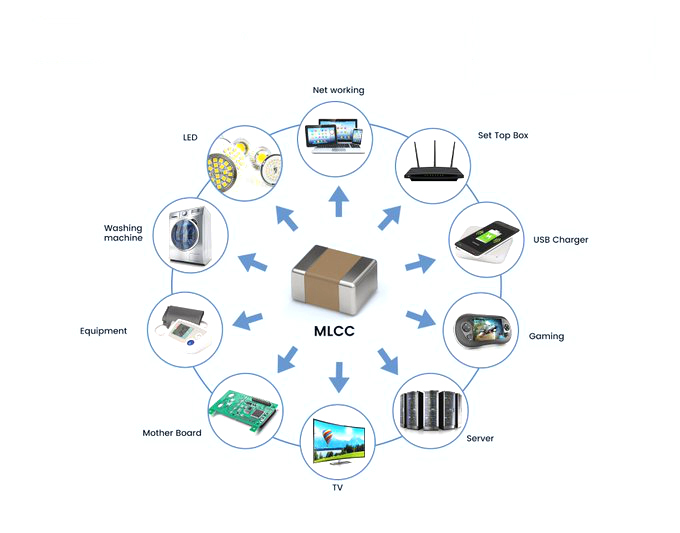
Conclusion:
Multilayer Ceramic Capacitors (MLCC) are indispensable components in modern electronics, offering compactness, high capacitance, and versatile applications. Their characteristics, classification based on dielectric material and temperature coefficient, and fundamental principles make them an essential part of electronic design. As technology advances, MLCC capacitors continue to play a pivotal role in shaping the future of electronic devices across industries.
The Multilayer Ceramic Capacitors from RisunSemi
RisunSemi recommends high-quality Multilayer Ceramic Capacitors to you. Click the link below to search for the Multilayer Ceramic Capacitors you need!
